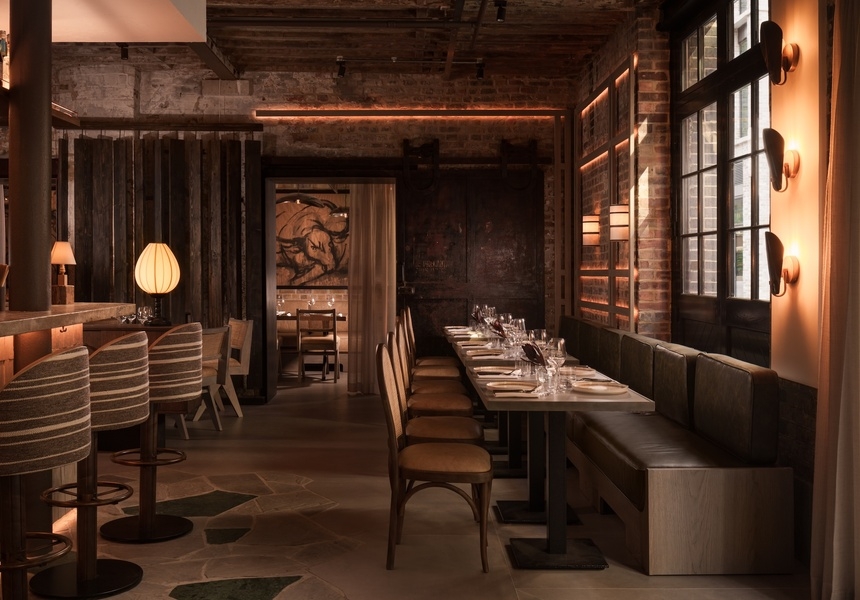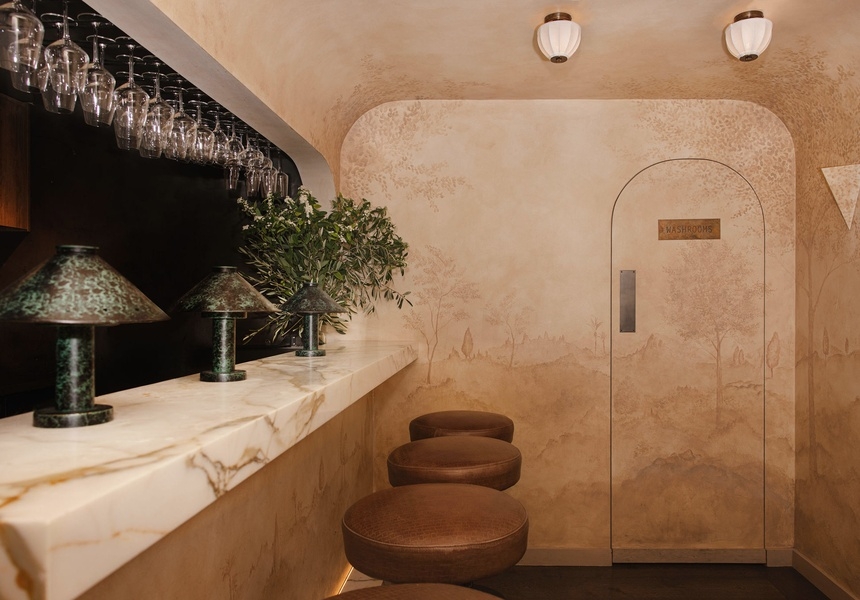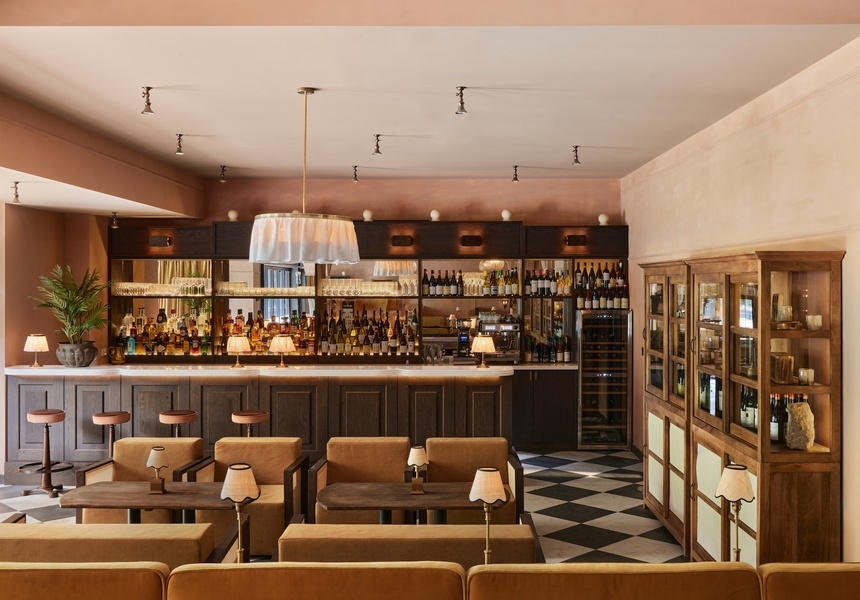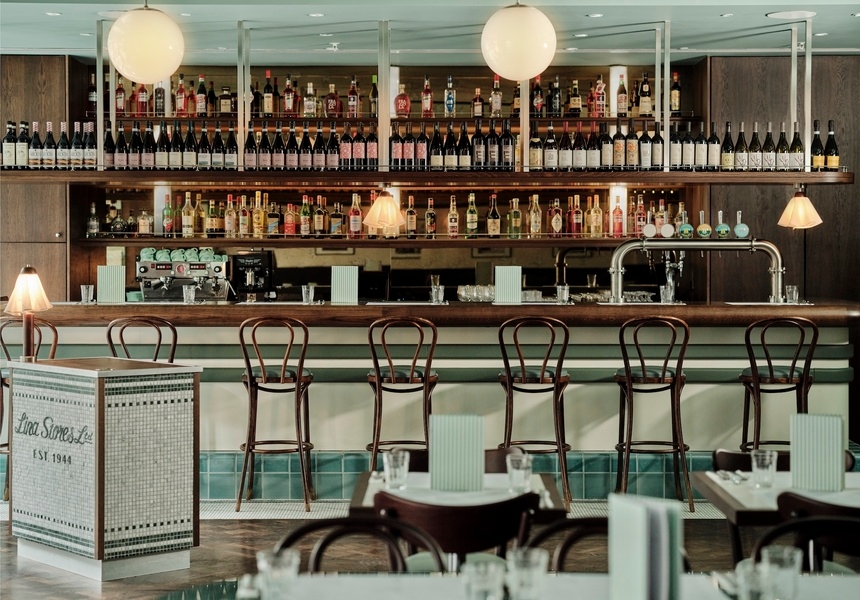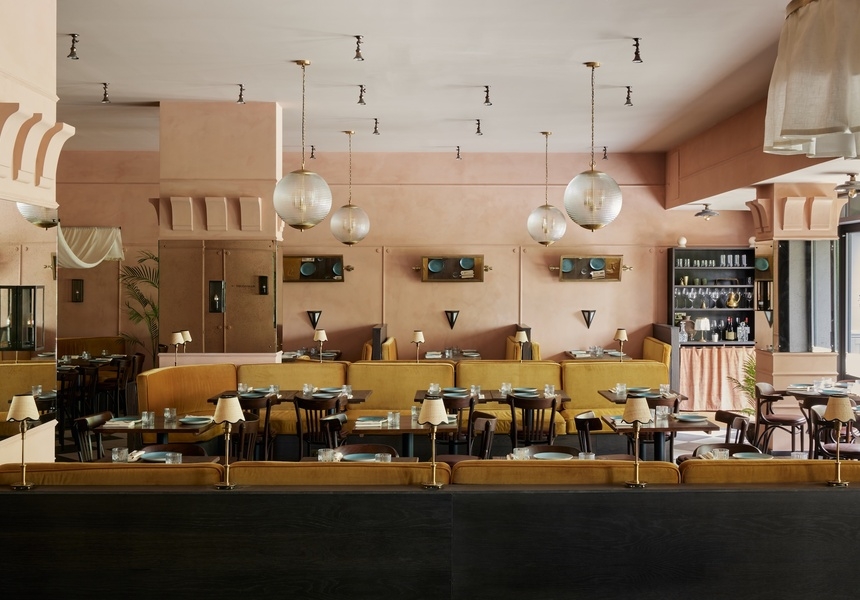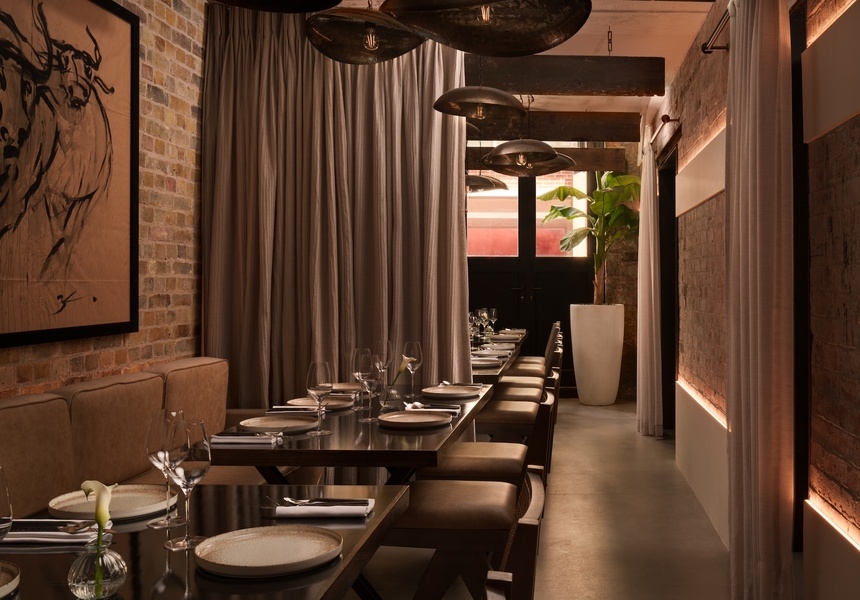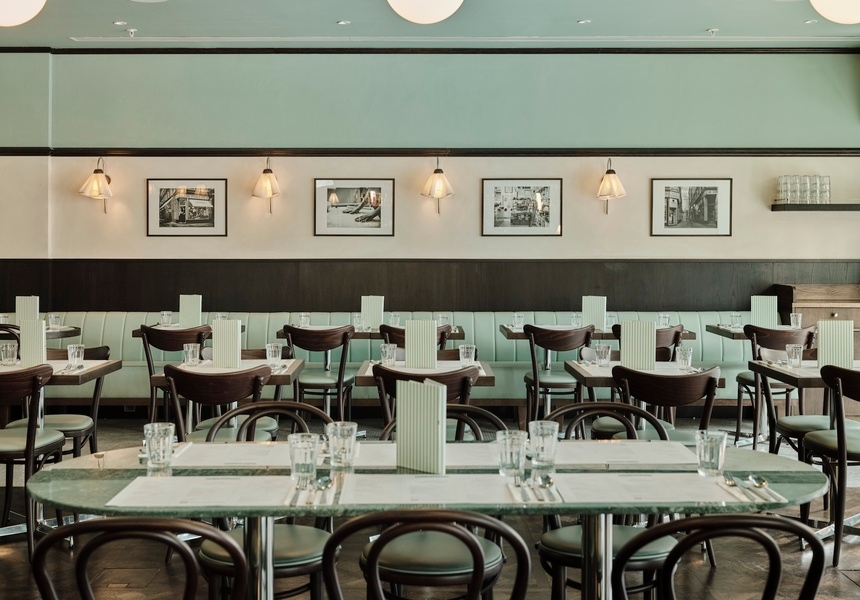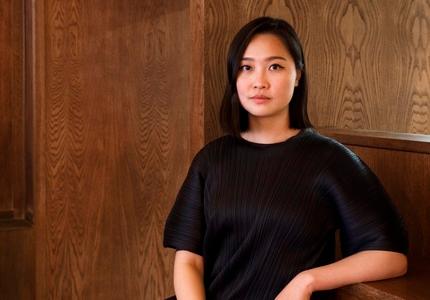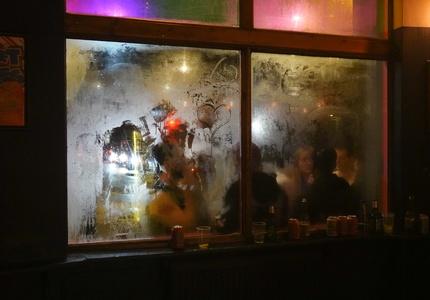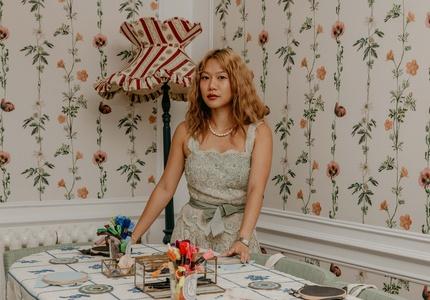From the first impression of a room in full swing to the walk to your table and the moment you sink into a plush chair or sumptuous booth, some restaurants just make you feel good. That isn’t a coincidence. Behind some of London’s top restaurants – and their purposefully crafted interiors – are designers like Annie Harrison of interiors studio Fare Inc. “When you’re designing restaurants, you want people to walk in and be taken away from the sterile architecture of the city or where they’ve been all day,” she tells Broadsheet.
Harrison – who started in branding for hotels before switching to interiors – has form. Her team of four has scooped design awards for its work on Sri Lankan restaurants Kolamba and Kolamba East, with the latter shortlisted for the prestigious Restaurant & Bar Design Awards earlier this year.
“I love working with the operations team to work out how they’re actually going to use the space, not just the customers,” says Harrison. “And we work closely with the chefs and the bartenders to make sure that the space works for them as much as it works for the clientele.
Here, Harrison shares what goes into good hospitality design – from sourcing to the magic of lighting and more.
##First impressions count
“I think entrance and your first eyeline down into the restaurant is so important,” Harrison says. “What the desk is like, how you’re greeted, even things like the smell – we’ll put incense sticks on the counter so, as soon as you arrive at the restaurant, you’re immersed.”
That sense of immersion is a Fare signature. “When guests are inside a restaurant we’ve designed, I’d love for them to feel immersed in the culture,” says Harrison. “Really immersed in where the food is from, and what the food story is. That’s very important to us.”
##Striking the right balance between cultural authenticity and contemporary dining is key
Fare has worked on projects that represent an array of cultures, from India (Kachori) and Sri Lanka (Kolamba and Kolamba East) to Palestine (Akub), as well as a forthcoming Lebanese restaurant. Striking the balance between fidelity to a culture while designing a contemporary, modern space has been pivotal to the studio’s success.
“Our focus is always on looking into the culture and the background of the cuisine, whatever the restaurant might be,” Harrison says. “We make sure that those cultural touch points come across in the interiors but also make sure that the interiors are done in a way that suits London. With any kind of cultural restaurant, you don’t want them to look themed.”
For the team’s formative work on Kolamba and Kolamba East, Harrison and her team sourced around 80 per cent of the furniture from Sri Lanka. The extra attention to detail has made all the difference. “Having real, authentic furniture and lighting from the country is just so special because it’s not going to be anywhere else.”
##Storytelling is integral
Harrison doesn’t hesitate to reference her favourite design: Akub, Fadi Kattan’s ode to Palestinian cuisine in Notting Hill. “The main design concept was from this old Palestinian postcard,” she says. “And I had this image of the desert, with some olive trees, and the colours were beautiful. It was pink and really aged, with a bit of green running through it, and it had these beautiful markings on the back.”
Unlike other projects where a research trip to gather inspiration and materials is possible, Palestine’s inaccessibility called for creativity and collaboration.
“I spent hours talking to Fadi about his family and his history, and he’s incredibly passionate about the country,” Harrison says. “It comes across hugely in his restaurant and all the work that he does. So, it was very, very inspiring.”
The postcard informed the designer’s colour palette for the design, as well as a mural that wraps around the basement and subterranean bar.
Harrison didn’t take the personal nature of the project lightly. Notably, the restaurant featured a wall with keys from houses stolen under the current occupation. “It was quite symbolic. It is interesting to think how the design might have been different if we were to do it now versus a few years ago,” she says. “But it was a nice touch that I think, for Fadi and his Palestinian friends who knew about that, for them to see and understand.”
##Texture and lighting is transformative
“I absolutely adore lighting,” Harrison says. To create flattering lighting, Harrison recommends “mixing a lot of beautiful, decorative wall lights with soft table lamps. We try to avoid using spotlights and things like that where we can. It’s mainly washes of LED and loads and loads of layers.”
